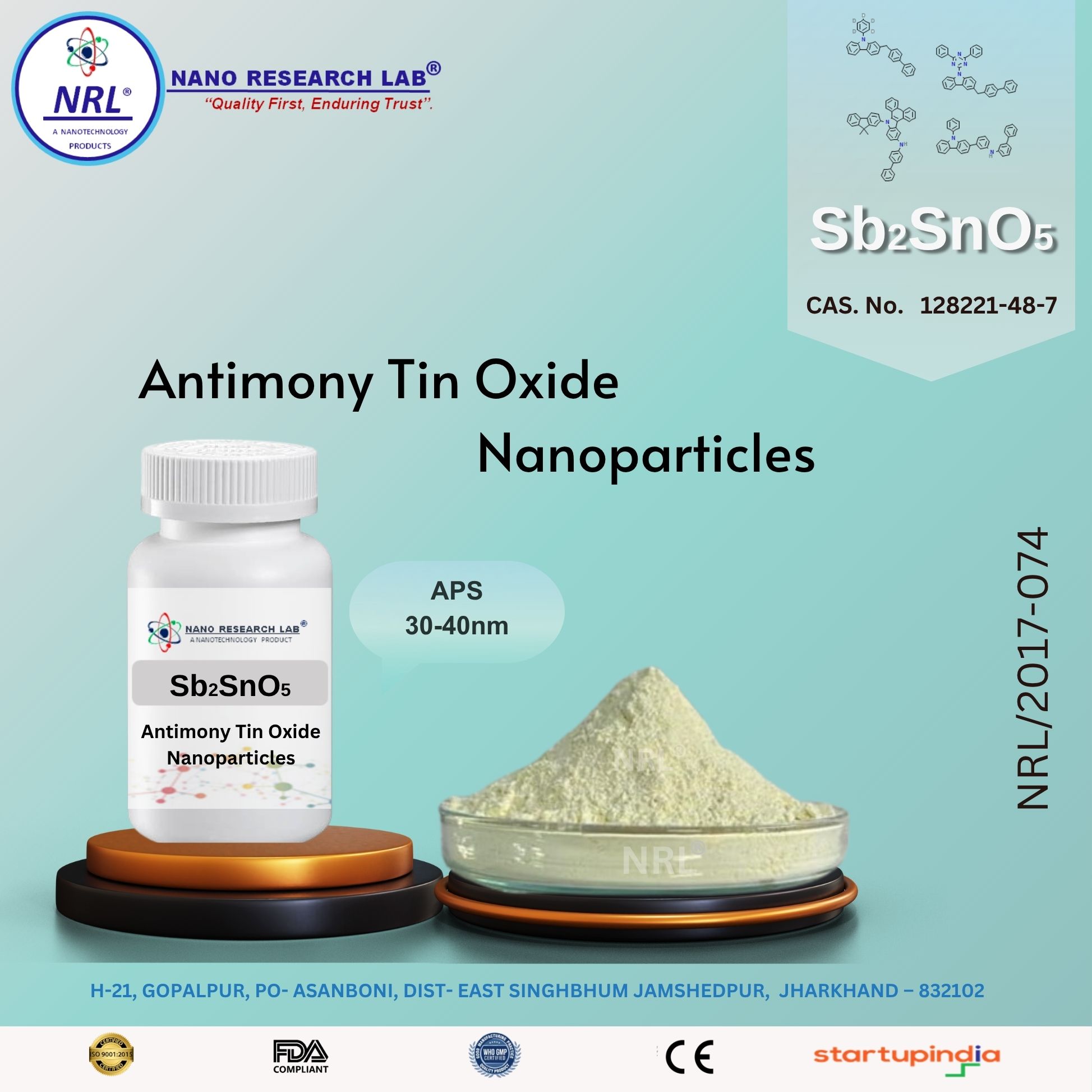
Antimony Tin Oxide Nanoparticles/Nanopowder (ATO, 30-40nm purity 99.5%)
₹1475.00
Antimony Tin Oxide (ATO) Nanoparticles / Nanopowder (30–40 nm, Purity 99.5%)
⚙️ Technical Specifications
Property | Specification |
|---|---|
Product Name | Antimony Tin Oxide Nanoparticles / Nanopowder |
Chemical Formula | Sb:SnO₂ (Antimony-doped Tin Oxide) |
Composition | Typically 5–10 mol% Sb₂O₃ doped SnO₂ |
Purity | ≥ 99.5% |
Particle Size | 30–40 nm |
Appearance | Blue-gray to light gray fine powder |
Crystal Structure | Tetragonal rutile (SnO₂ structure) |
Density | ~6.8 g/cm³ |
Band Gap | ~3.6 eV (tunable with Sb doping) |
Electrical Resistivity | 10⁻³–10⁻⁴ Ω·cm (depending on processing) |
Surface Area (BET) | 25–45 m²/g |
Solubility | Insoluble in water, soluble in acids |
CAS Number | 12626-11-2 |
🌟 Key Features
High-purity (≥99.5%) ATO nanoparticles with uniform particle size (30–40 nm)
Excellent electrical conductivity and optical transparency
Strong infrared (IR) absorption and visible light transparency
Good chemical stability and thermal resistance
Environmentally friendly and non-toxic alternative to Indium Tin Oxide (ITO)
Compatible with sol–gel, spray, spin-coating, and sputtering methods
🔬 Applications (in Detail)
1. Transparent Conductive Coatings (TCO)
ATO is widely used as a transparent conductive oxide in displays, touch panels, and LCDs.
Provides visible transparency (>80%) with low sheet resistance.
Suitable for anti-static and EMI-shielding coatings on glass or plastic substrates.
2. Infrared (IR) Shielding & Heat Control Films
Strong IR reflection and absorption properties make ATO ideal for heat-insulating coatings.
Used in automotive windows, architectural glass, and energy-saving films.
Blocks IR radiation while maintaining high visible light transmission.
3. Antistatic & EMI Shielding Applications
ATO nanoparticles impart antistatic properties to plastics, coatings, and fabrics.
Prevents static buildup in electronic packaging, optical lenses, and touch displays.
Used in EMI shielding paints and conductive polymers.
4. Photocatalysis & Sensors
Doped SnO₂ structure enhances photoelectrical and gas-sensing properties.
Used in gas sensors, photocatalytic degradation of pollutants, and UV detectors.
5. Solar and Optoelectronic Devices
Acts as a transparent electrode in solar cells, electrochromic devices, and OLEDs.
Enhances light management, conductivity, and device lifetime.
6. Paints & Coatings
Used as a nano-additive in antistatic paints, transparent conductive coatings, and UV-blocking finishes.
Provides durability, chemical resistance, and thermal stability.
7. Polymer & Textile Applications
Imparts conductivity and UV/IR shielding in synthetic fibers and plastic films.
Used for smart textiles, anti-dust fabrics, and flexible electronics.
⚠️ Handling & Storage
Store in a cool, dry place away from humidity and strong oxidizing agents.
Handle under inert atmosphere if possible.
Use gloves, masks, and eye protection to avoid nanoparticle inhalation or skin contact.
